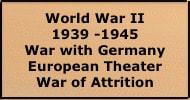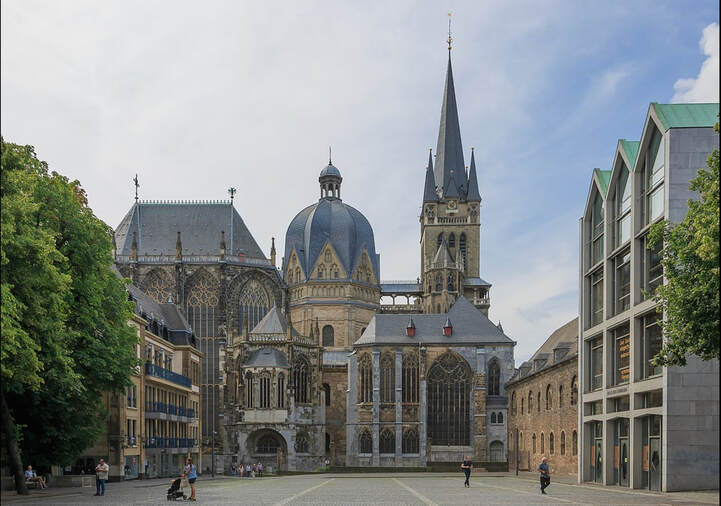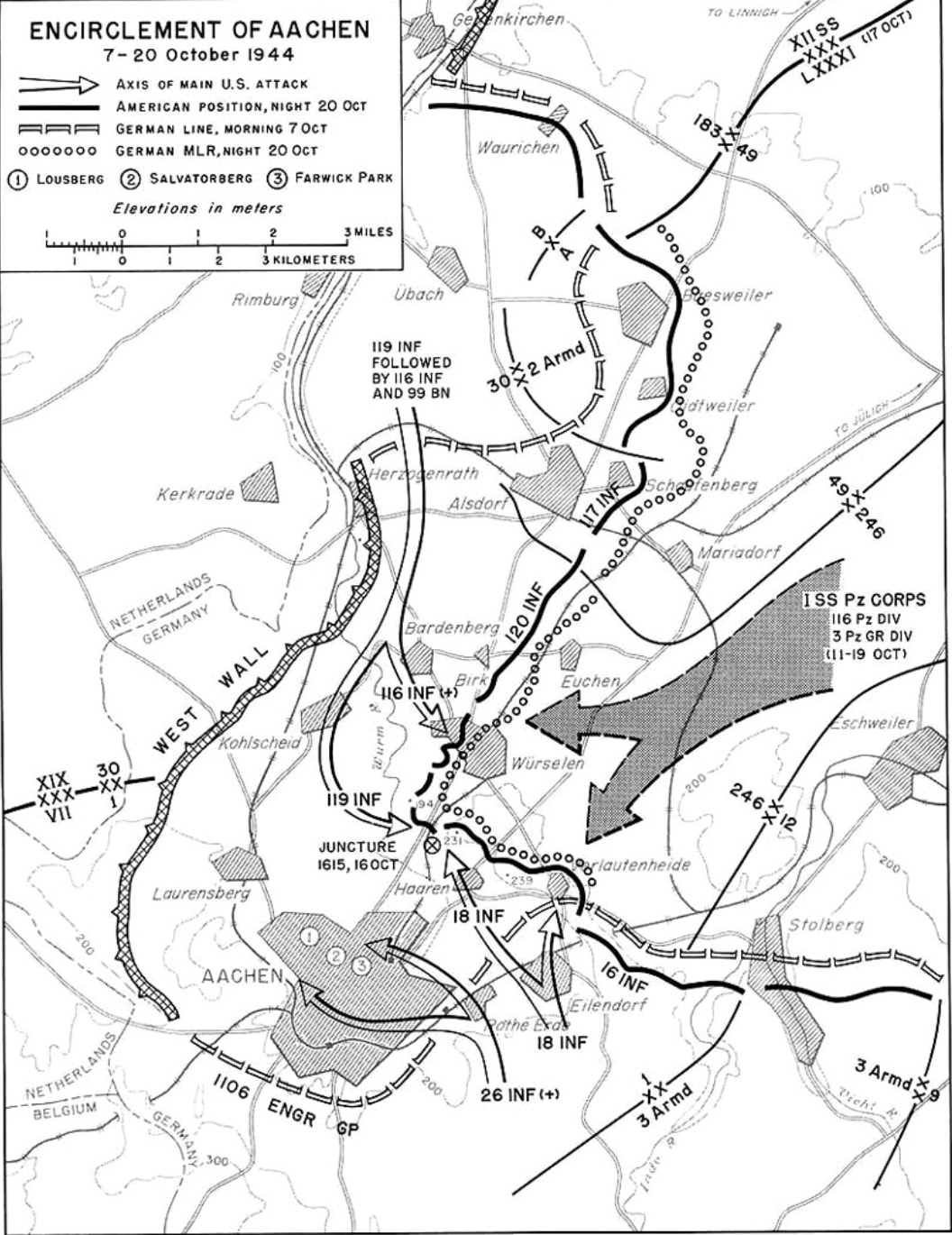bigpigeon.us webpage WWII Germany > The ETO > War of Attrition > Aachen, © 2023 by Robert A. Christiansen, updated by RAC 31 Dec 2023.
Aachen, located a few miles east of the German border with Belgium and the Netherlands, was the first German city captured by the Allies in WWII.
Aachen, located a few miles east of the German border with Belgium and the Netherlands, was the first German city captured by the Allies in WWII.
In mid-September 1944, at the end of the the German Army's retreat from France and Belgium, the US First Army's VII Corps crossed the German border and penetrated portions of the defensive barrier known as the West Wall or Siegfried Line.
|
Having passed through the outer ring of fortifications, VII Corps' 1st Infantry Division continued towards Aachen, inducing a level of panic among Aachen's leadership. On 13 September, the military commander in Aachen came close to surrendering.
However, instead of surrendering, German forces launched a counterattack. What is sometimes known as the First Battle of Aachen then continued until late September, as the 1st Infantry attempted to isolate Aachen. Because of supply and manpower issues, a lull then ensued in 1st Division operations. On 2 October, XIX Corps' 30th Infantry Division began to break through the Siegfried Line north of Aachen, and then moved southward towards Aachen. With both divisions attacking, the encirclement of Aachen resumed on 7 October. The German Army sent in substantial reinforcements, as shown in the dark arrow on the accompanying map. Fierce combat ensued between US units and German reinforcements before the encirclement was complete. On 16 October, the 30th and 1st divisions met. Although the main players in the encirclement were the 1st and 30th Infantry Divisions, components of other divisions were added as necessary. |
Bombardment of Aachen began before the encirclement was completed. Although encircled, German military in Aachen refused to surrender. Nasty urban warfare followed, with much of the historic city of Aachen being destroyed by artillery and from the air before the surrender on 20 October.
Sources for Big Pigeon's The ETO > War of Attrition > Aachen webpage:
Major Sources:
Pottawattamie Area WWII Dead - The ETO > War of Attrition > Aachen:
† Gilmore, Burrel Gilbert, SN 39-018-679, US Army, Woodbury Co.
Major Sources:
- The Siegfried Line Campaign, www.ibiblio.org/hyperwar/USA/USA-E-Siegfried/index.html - (from the United States Army in World War II, European Theater of Operations series, by Charles B. MacDonald, 1963), Part 3, The Battle of Aachen.
- The Battle of Aachen, https://en.wikipedia.org/wiki/Battle_of_Aachenhttps://en.wikipedia.org/wiki/Battle_of_Aachen.
- Aachen Cathedral, the webpage header photo - https://en.wikipedia.org/wiki/Aachen_Cathedral. The cathedral was restored after being heavily damaged during WWII.
- Encirclement of Aachen, map, https://history.army.mil/books/wwii/siegfried/Pics/pg282map4.jpg. Map 4 in The Siegfried Line Campaign cited above.
Pottawattamie Area WWII Dead - The ETO > War of Attrition > Aachen:
- Taken from the bigpigeon.us WWII Dead module.
† Gilmore, Burrel Gilbert, SN 39-018-679, US Army, Woodbury Co.
- 18th Inf. Regt., 1st Inf. Div., VII Corps, First Army; KIA 8 Oct 1944 near Aachen, North Rhine-Westphalia, Germany; The ETO > War of Attrition > Aachen.
- 120th Inf. Regt., 30th Inf. Div., First & Ninth Armies; KIA 26 Oct 1944 near Herzogenrath, N of Aachen, North Rhine-Westphalia; The ETO > War of Attrition > Aachen.
- 67th Armored Regt., 2nd Armored Div., XIX Corps, First Army; KIA 6 Oct 1944, probably near Wurm River, N of Aachen, North Rhine-Westphalia, Germany; The ETO > War of Attrition > Aachen.





